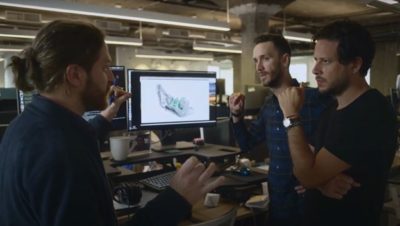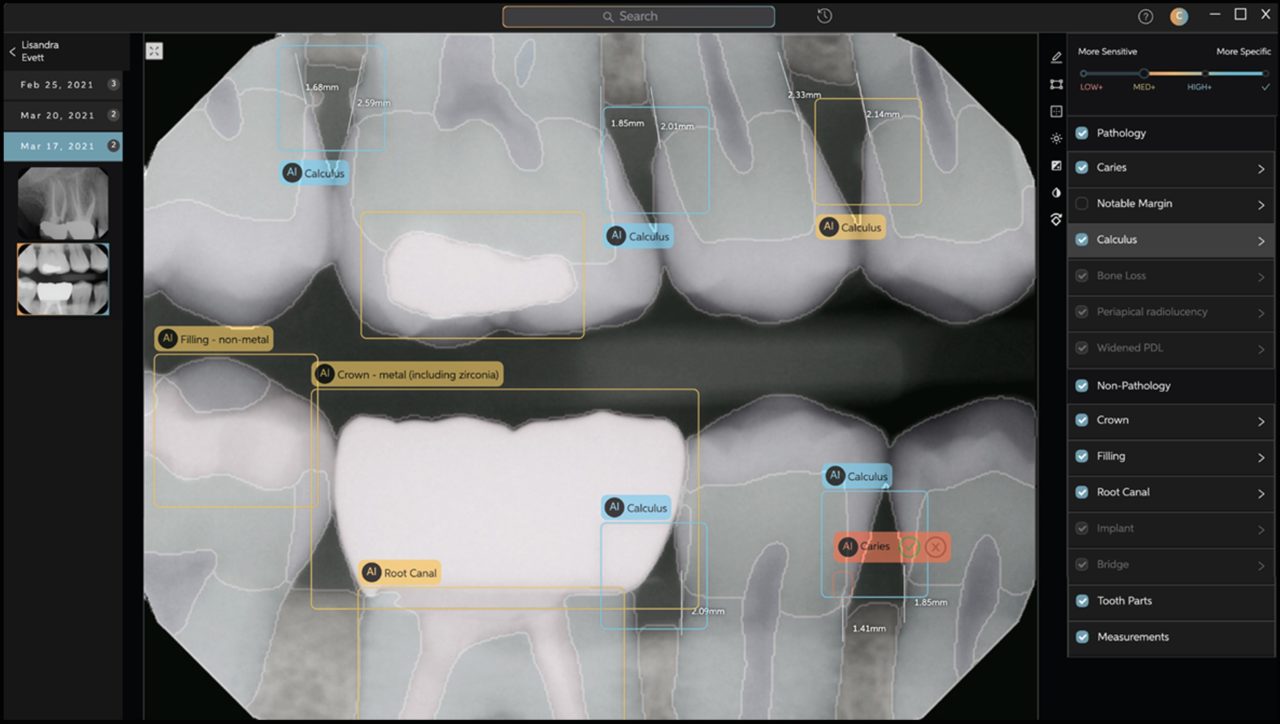Your next trip to the dentist might offer a taste of AI.
Pearl, a West Hollywood startup, provides AI for dental images to assist in diagnosis. It landed FDA clearance last month, one of the first to get such a go-ahead for dentistry AI.
The approval paves the way for its use in clinics across the United States.
“It’s really a first of its kind for dentistry,” said Ophir Tanz, co-founder and CEO of Pearl. “But we also have similar regulatory approvals across 50 countries globally.”
Pearl’s software platform, available in the cloud as a service, enables dentists to run real-time screening of X-rays. Dentists can then review the AI findings and share them with patients to facilitate informed dentist-patient discussions about diagnosis and treatment planning.
Behind the scenes, NVIDIA GPU-driven convolutional neural networks developed by Pearl can spot not just tooth decay but many other dental issues, like cracked crowns and root abscess requiring a root canal.
Pearl’s AI offers dentist results. The startup’s FDA application showed that on average Pearl AI was capable of spotting 36 percent more pathologies and other dental issues than an average dentist. “And that’s important because in dentistry it’s extremely common and routine to miss a pathology,” said Tanz.
The company’s products include its Practice Intelligence, which enables dental practices to run AI on patient data to discover missed diagnoses and treatment opportunities. Pearl Protect can help screen for dental insurance fraud, waste and abuse, while Claims Review offers automated claims examination.
Pearl, founded in 2019, is a member of the NVIDIA Inception startup program, which provided it access to Deep Learning Institute courses, NVIDIA Developer Forums and technical workshops.
Hatching Dental AI
The son of a dentist, Tanz has a mouthful of a founding tale. The entrepreneur decided to pursue AI for dental radiology after talking shop on a visit with his dentist. A partner at the practice liked the idea so much he jumped on board as a co-founder.

Pearl co-founders Cambron Carter, Kyle Stanley and Ophir Tanz (left to right)
Tanz, who founded tech unicorn GumGum for AI to analyze images, video and text for better contextual advertising, was joined by GumGum colleague Cambron Carter, now CTO and co-founder at Pearl. Dentist Kyle Stanley, co-founder and chief clinical officer, rounds out the trio with clinical experience.
Pearl’s founders targeted a host of conditions commonly addressed in dental clinics. They labeled more than a million images to help train their proprietary CNN models, running on NVIDIA V100 Tensor Core GPUs in the cloud, to identify issues. Before that they had prototyped on local NVIDIA-powered workstations.
Inference is done on cloud-based GPUs, where Pearl’s system synchronizes with the dentist’s real-time and historial radiology data. “The dental vertical is still undergoing a transition to the cloud, and now we’re bringing them AI in the cloud — we represent a wave of technology that will propel the field of dentistry into the future,” said Carter.
Getting FDA approval wasn’t easy, he said. It required completing an expansive clinical trial. Pearl submitted four studies, each involving thousands of X-rays and over 80 expert dentists and radiologists.
Getting Second Opinion for Diagnosis
Pearl offers dentists a product called Second Opinion to aid in the detection of disease in radiography. Second Opinion can identify dozens of conditions to help validate dentist’s findings, according to Tanz.
“We’re the only company in the world that is able to diagnose pathology and detect disease in an AI-driven manner in the dental practice,” he said. “We’re driving a much more comprehensive diagnosis, and it’s a diagnostic aid for general practitioners.”
Second Opinion is taking root in clinics. Sage Dental, which has more than 60 offices across the East Coast, is a customer. Dental 365 is a customer with more than 60 offices in the region as well.
“Second Opinion is an extremely important tool for the future of dentistry,” said Cindy Roark, chief clinical officer at Sage. “Dentistry has needed consistency for a very long time. Diagnosis is highly variable, and variability leads to confusion and distrust from patients.”
Boosting Doctor-Patient Rapport
Dentists review X-rays while patients are in the chair, pointing out any issues as they go. Even for experienced dentists, making sense of the grayscale imagery that forms the basis of most treatment plans can be challenging — only compounded by the many demands on their attention throughout a busy day juggling patients.
For patients, comprehending the indistinct gradations in X-rays that separate healthy tooth structures from unhealthy ones is even harder.
But with AI-aided images, dentists are able to present areas of concern outlined by simple, digestible bounding boxes. This ensures that their treatment plans have a sound basis, while providing patients with a much clearer picture of what exactly is going on in their X-rays.
“You’re able to have a highly visual sort of discussion and paint a visual narrative for patients so that they really start to understand what is going on in their mouth,” said Dr. Stanley.
